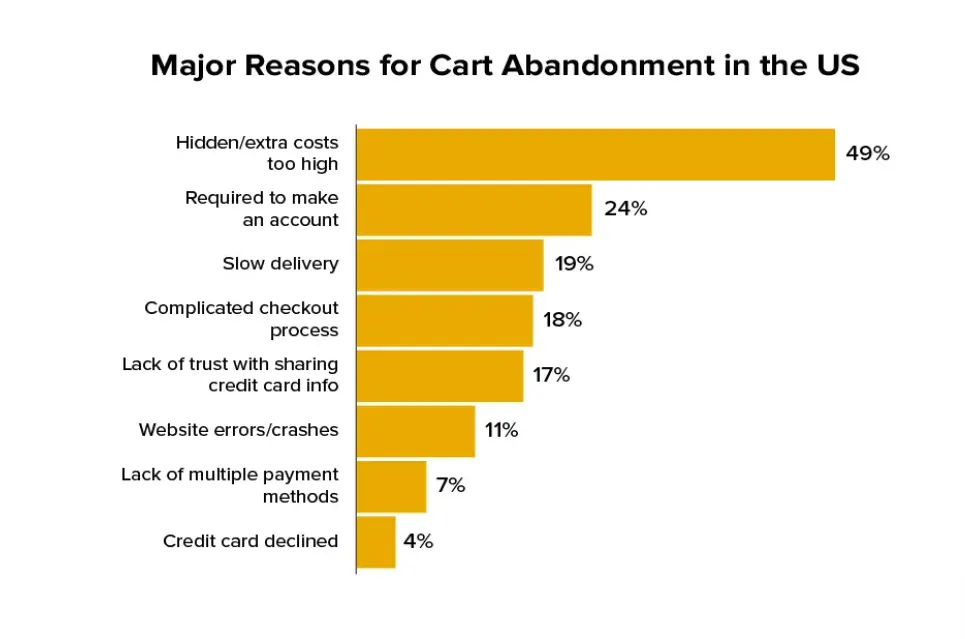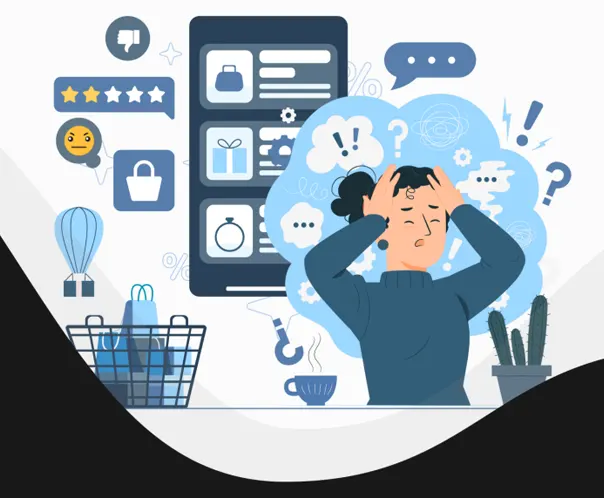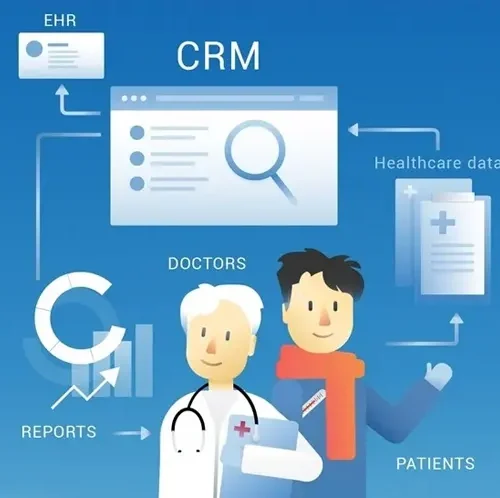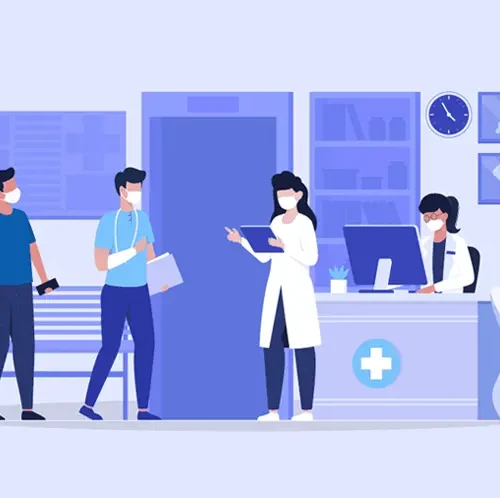E-commerce has diverse our purchasing behaviors, providing convenience, significantly increasing the shopping momentum of purchase therapy, and a vast array of products at our fingertips. The market value has reached around USD 5.3 trillion.
What’s the reason behind our conversation about e-commerce user pain points today? According to estimates, 95% of purchases will be made online by 2024, so retailers should focus on identifying pain points and finding e-commerce IT solutions.
However, as the market expands, so do the challenges faced by online shoppers. Slow loading speeds of e-commerce pages, payment-integration process failures, difficulty while navigating products, insufficient refund policies, and cybersecurity threats have become major customer pain points in E-commerce websites, which hinder business turnovers.
Fortunately, technology has the solution to this problem. This blog aims to tackle the frustrations of E-commerce customers by discussing tech solutions. Our exploration will address the transformative power of innovative solutions in the online shopping experience for consumers and businesses.
Online shopping has become a boon for customers with access to a vast array of products at their fingertips. However, it is not without its pain points. Let’s dive into the challenges faced by online shoppers and how does e-commerce website development company conquers the industry challenges.

Slow Loading Speeds: A Need for Speed In Loading time Less Than 2.5Sec!
One of the most frustrating experiences for online shoppers is encountering a slow-loading website. In a fast-paced world, delays in page loading can quickly drive customers away. However, the advent of advanced content delivery networks (CDNs) and server options has helped alleviate this issue. By leveraging these solutions, businesses can ensure faster loading speeds, reducing bounce rates and increasing customer satisfaction.
Payment Failures: Need Seamless Transactions for Happy Customers!
Payment failures can be a major turn-off for online shoppers, leading to abandoned carts and lost sales. To combat this issue, businesses can integrate multiple payment gateways, allowing customers to choose from a variety of options. Additionally, implementing robust payment security measures, such as two-factor authentication and encryption, can instill trust and protect sensitive customer information.
Confusing Website Navigation: Make Simplicity is Key!
Navigating an E-commerce website should be intuitive and straightforward. Unfortunately, this is not always the case. Complex menu structures, hidden search bars, and ambiguous category filters can leave customers feeling lost and frustrated. By focusing on user-centered design principles, businesses can create intuitive navigation systems that make it easy for customers to find what they’re looking for. Implementing clear menus, prominent search bars, and intuitive filtering options can greatly enhance the overall user experience.
Poor Refund Policies: Build Trust Through Seamless Refund Transparency!
Returns and refund processes can make or break a customer’s perception of an E-commerce brand. Lengthy procedures, hidden fees, and ambiguous policies can create frustration and erode trust. To address this pain point, businesses need to develop clear and transparent refund policies. Simplifying the return process, providing clear instructions, and offering hassle-free returns can turn unhappy customers into loyal advocates.
Cybersecurity Concerns: Protecting Customer Data To Win Trust!
Now that the digital landscape has reached (more prone) vulnerable points, cybersecurity is of vital significance to keep protected from uninvited threats. With the increasing frequency of data breaches, customers are understandably concerned about the safety of their personal information. To mitigate cybersecurity risks, businesses must invest in robust security measures. Implementing SSL certificates, utilizing secure payment gateways, and regularly conducting security audits can help safeguard customer data, inspiring trust and confidence in the E-commerce platform.
Other Facts such as;
Faulty Product Filtering Effects–
Customers may flounder to find products that meet their needs with faulty filtering options. Incorporating dynamic or accurate product filtering, and visual search functionality can help customers find exactly what they are looking for.
Such as filtering by gender, and product categories like electronics, home appliances, fashion items, garments, consumer durables, etc.
Poor Personalization –
A tailored shopping experience with personalized product recommendations and predictive analytics can increase engagement, customer satisfaction, and loyalty.
Lack of Mobile Responsive Design –
Websites that haven’t been optimized for mobile screens make navigation through handheld devices frustrating. Responsive and adaptive web design, as well as server-side rendering, can offer a seamless experience across devices.
Weak Customer Support –
Weak post-sales can trigger discontinued or dissatisfied purchases and drive a negative brand reputation. So, it’s certainly essential that when clients need help, they can effortlessly link to an efficient customer support team.
Resolving issues such as cart abandonment, simplifying the checkout process, and providing clear navigation options can make a customer support system more reliable.
Frequent Server Overload/ Site Crash –
High traffic can cause server overload, causing a slowdown or site crash. Strategies such as server optimization, server hardware upgrade, content delivery networks (CDNs), and load balancing can prevent overload and crashes during high-traffic periods.Streamline The Checkout Process – Optimize your checkout by condensing it into just 3-5 steps for a seamless process. Make sure there is clear navigation and the ability to checkout as a guest, without needing to create an account. Avoid unnecessary bank redirects and other details by consolidating payment onto one page.
The solution we offer:
The rapid growth of E-commerce has brought forth different pain points for online shoppers. From slow loading speeds to confusing website navigation, these challenges can impede industry as well as E-commerce business success.
However, with the co-efficiency and expertise of E-commerce Website Development Companies through their technology dominions, these pain points can be addressed and transformed into opportunities for growth.
By leveraging innovative solutions such as advanced CDNs, multiple payment gateways, user-centered design principles, transparent refund policies, and booming cybersecurity measures, businesses can establish a seamless shopping experience that delights customers and drives profitability.
The future of E-commerce is promising, and by addressing these pain points head-on, E-commerce vendors can position themselves as industry leaders, maximizing their potential in this ever-expanding digital marketplace.
Maven Technology, can differentiate from through triggering consequences of these hardy E-commerce Website Pain Points, and address those solutions by making a strong journey towards a greater impact of online shopping experience could be more seamless, bug-free, and less daunting, with no longer a source of frustration, we make an aesthetic and effortless experience for all e-commerce industry.




